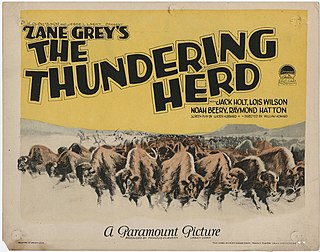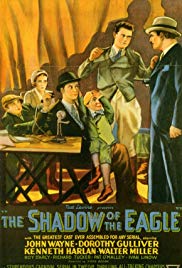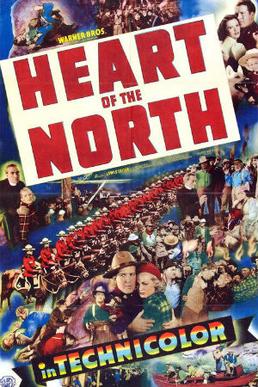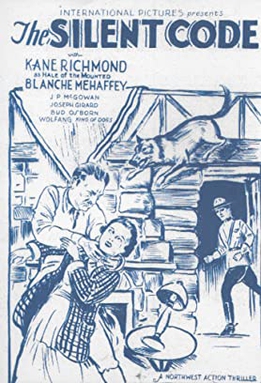
Woodbridge Strong Van Dyke II was an American film director who made several successful early sound films, including Tarzan the Ape Man in 1932, The Thin Man in 1934, San Francisco in 1936, and six popular musicals with Nelson Eddy and Jeanette MacDonald. He received two Academy Award nominations for Best Director for The Thin Man and San Francisco, and directed four actors to Oscar nominations: William Powell, Spencer Tracy, Norma Shearer, and Robert Morley. Known as a reliable craftsman who made his films on schedule and under budget, he earned the name "One Take Woody" for his quick and efficient style of filming.

Enos Edward "Yakima" Canutt was an American champion rodeo rider, actor, stuntman, and action director. He developed many stunts for films and the techniques and technology to protect stuntmen in performing them.

Big Jake is a 1971 American Technicolor Western film starring John Wayne, Richard Boone and Maureen O'Hara. The picture was the final film for George Sherman in a directing career of more than 30 years, and Maureen O'Hara's last film with John Wayne and her last before her twenty-year retirement. The supporting cast features Patrick Wayne, Christopher Mitchum, Glenn Corbett, Jim Davis, John Agar, Harry Carey Jr. and Hank Worden.

Petros 'Pedro' Regas, a veteran stage actor, Regas was spotted on the Broadway stage by Mary Pickford who persuaded him to go to Hollywood and be in pictures, which he did in 1920 and continued to play in films for 50 years.

The Northern or Northwestern is a genre in various arts that tell stories set primarily in the late 19th or early 20th century in the north of North America, primarily in western Canada but also in Alaska. It is similar to the Western genre, but many elements are different, as appropriate to its setting. It is common for the central character to be a Mountie instead of a cowboy or sheriff. Other common characters include fur trappers and traders, lumberjacks, prospectors, First Nations people, settlers, and townsfolk.

Invisible Stripes is a 1939 Warner Bros. crime film starring George Raft as a gangster unable to go straight after returning home from prison. The movie was directed by Lloyd Bacon and also features William Holden, Jane Bryan and Humphrey Bogart. The screenplay by Warren Duff was based on the novel of the same title by Warden Lewis E. Lawes, a fervent crusader for prison reform, as adapted by Jonathan Finn.

The Thundering Herd is a 1925 American silent Western film, now lost. It is directed by William K. Howard and starring Jack Holt, Lois Wilson, Noah Beery, Sr. and Raymond Hatton. Based on Zane Grey's 1925 novel of the same name and written by Lucien Hubbard, the film is about a trader who uncovers a scheme to blame the Indians for a buffalo-herd massacre. It was one of a series of critically and commercially successful Zane Grey westerns produced by Jesse Lasky and Adolph Zukor for Paramount Pictures.

The Shadow of the Eagle is a 1932 American Pre-Code Mascot 12 episode film serial, directed by Ford Beebe and B. Reeves Eason and produced by Nat Levine. The film stars John Wayne in his first serial role. He would go on to star in two other serials for Mascot, The Hurricane Express (1932) and The Three Musketeers (1933). The Shadow of the Eagle is now in the public domain.
David Ross Lederman was an American film director noted for his Western/action/adventure films of the 1930s and 1940s.

William Grigs Atkinson, known professionally as Paul Cavanagh, was an English film and stage actor. He appeared in more than 100 films between 1928 and 1959.

Tell It to the Marines is a 1926 American silent romantic drama film directed by George W. Hill and starring Lon Chaney, William Haines, and Eleanor Boardman. The film follows a Marine recruit and the sergeant who trains him. It was the biggest box office success of Chaney's career and the second biggest moneymaker of 1926/1927.

Renfrew of the Royal Mounted is a 1937 American film produced and directed by Albert Herman and starring James Newill, Carol Hughes, and William Royle. Released by Grand National Pictures, it is the first of eight films based on Renfrew of the Royal Mounted, a popular series of boy's adventure books written by Laurie York Erskine. The film was shot on location at Big Bear Lake, California.

The Wild North is a 1952 American Western film directed by Andrew Marton and starring Stewart Granger, Wendell Corey and Cyd Charisse. It was the first Ansco Color film shot.

Arizona Gunfighter is a 1937 American western film directed by Sam Newfield and starring Bob Steele, Jean Carmen and Ted Adams. It was produced and distributed by Republic Pictures.
Charles Clifford Coleman, Jr. was an American film director, who usually worked as an assistant director.

Heart of the North is a 1938 American adventure film directed by Lewis Seiler and written by Lee Katz and Vincent Sherman. The film stars Dick Foran, Gloria Dickson, Gale Page, Allen Jenkins, Patric Knowles, and Janet Chapman. The film was released by Warner Bros. on December 10, 1938. It is based on the novel with the same name, written by William Byron Mowery.
Champagne for Breakfast is a 1935 American comedy-drama film, directed by Melville Brown. It stars Mary Carlisle, Hardie Albright, and Joan Marsh, and was released on June 18, 1935.
The Western Whirlwind is a 1927 American silent Western film directed by Albert S. Rogell and written by Harrison Jacobs. The film stars Jack Hoxie, Margaret Quimby, Claude Payton, Billy Engle, Edith Murgatroyd and Jack Pratt. The film was released on February 20, 1927, by Universal Pictures.

The Code of the Mounted is a 1935 American drama film directed by Sam Newfield from a screenplay by Milton Raison. The film stars Kermit Maynard, Robert Warwick, and Jim Thorpe.

The Silent Code is a 1935 American Western film written by George Morgan and directed by Stuart Paton. It was the third of a scheduled six films in the "Morton of the Mounties" series, although this would be the last one made. The first two, Courage of the North and Timber Terrors starred John Preston in the title role. This film saw Kane Richmond take over the lead, co-starring with Blanche Mehaffey.
















